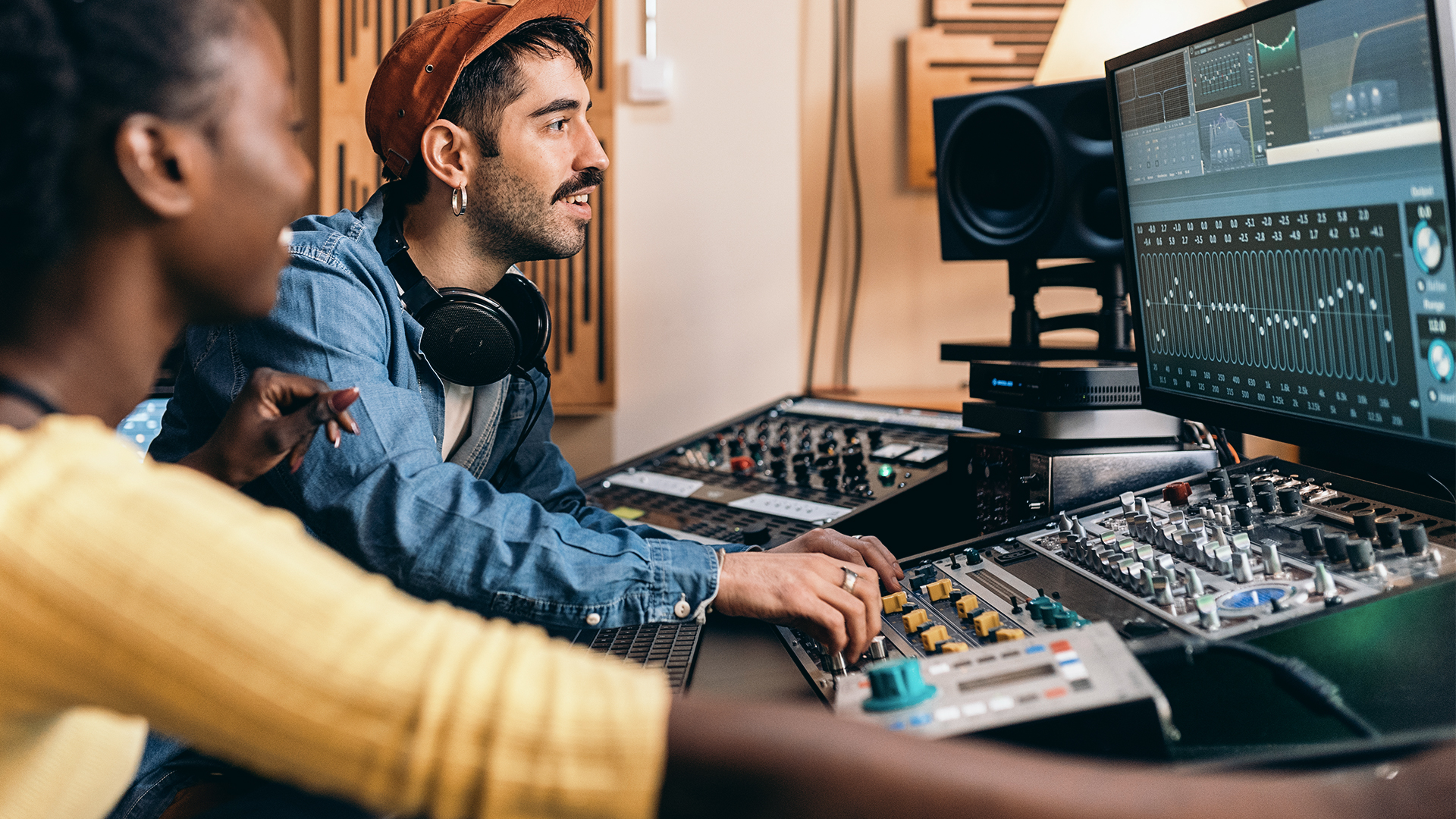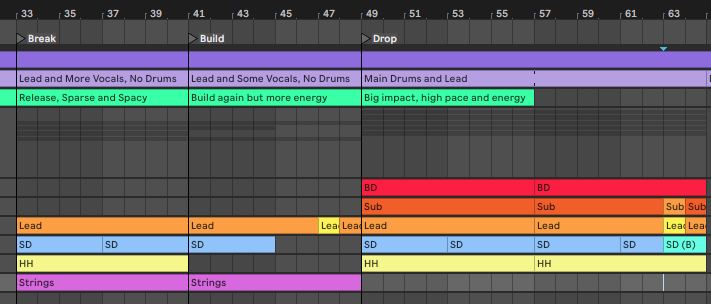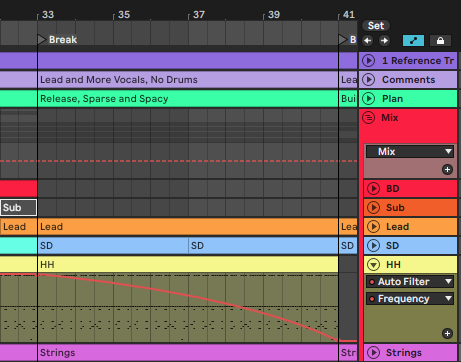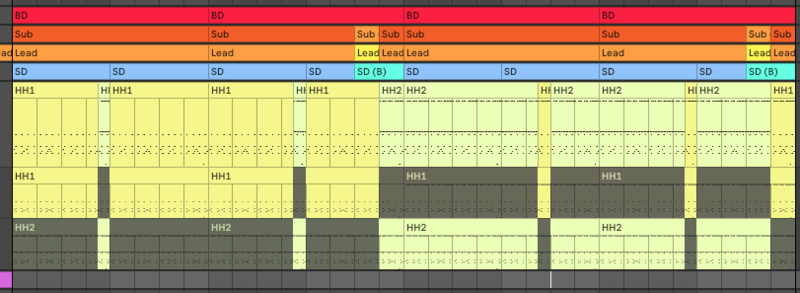Blog
9 Workflow Tips to Help you Produce More Tracks
31 Jul '2023
Sidestep creative obstacles and start following through on your ideas with this guide to efficient music production

Whether you’re a total novice trying to finish your first full track, or a seasoned music production veteran with a catalog of releases under your belt, chances are you’ve got a hard drive full of eight-bar loops that you just can’t seem to develop into something more substantial. While it can be frustrating, this is a pretty occurrence when making electronic music, as by its very nature it’s built on a lot of repetition and looping.
Getting a bird’s eye view of what the track needs and then expanding beyond your initial idea can be tough. In this article, we’ll explore some techniques you can employ to take what you have and bring it to its natural conclusion.
Introduce variation
While it might not seem like the most exciting option, duplicating your existing eight-bar loop and adding some variation to the duplicated section can be a good starting point. It not only doubles the length of your existing composition, but will help to keep your arrangement more interesting and varied as the track progresses.

Experiment with reversing parts, adding pauses, automating effects or writing melody variations to create a unique part B to your original loop. Remember, the intention is to keep the audience interested and excited, something that can be achieved even with subtle changes to a simple arrangement.
Use a reference track
When you’ve only got a vague idea about the basic premise of your song, it can be hard to see how it’s going to progress. Using reference tracks can be a helpful way around this issue. Try dragging a track of a similar style into your DAW, syncing it to your project’s BPM and adding track markers to label the sections of the reference track. By adding in track markers for the intro, break/build, drops/choruses and so on, you can develop a rough structure of your own that your track could follow.

You could even start to pay attention to which elements are present in each section, for example, the introduction may contain some light percussion and a pad or texture. Try creating a MIDI track with empty MIDI clips below the reference track, and renaming the clips with comments on the corresponding section.
While this might give you a rough indication of how you could arrange your song, there is no set way to structure it and you should try to base your final composition on its own individual flow and feel.
Define your sections
Once you have sketched out the structure of your track using a technique like the one mentioned above, you can go a step further and decide what kind of energy or emotion you’re trying to convey during each of the sections. Create another MIDI track with empty MIDI clips and rename them according to what you want to accomplish at each section.

For example, at bar 32 you might want eight bars which generate tension followed by eight bars of release. Once you’ve decided on what you want your song to do and when, you can then decide on the elements that need to be present to achieve that.
If you’re not sure on how to achieve the desired energy or emotion, listen to some more reference tracks and make notes on how other artists invoke certain feelings in their compositions. They might give you some ideas on compositional strategies or processing techniques, and after doing this you should have a roadmap for how you want the energy and vibe to progress throughout your own song.
Mute tracks or clips
Now you have some signposts to direct the flow of your composition, it’s time to start arranging. A good way to start an arrangement is to mute all of your tracks or clips, and experiment with bringing elements in and out to see how they work together. Auditioning different configurations of tracks will give you some options for how you want to structure an intro, build, drop or other section.

Work in multiples of four-bar sections and slowly bring in more and more elements as you build up the energy of your track. Try dropping out certain sounds for a bar or two before the introduction of a new element, as this will keep the arrangement interesting and indicate to the listener that there is a change imminent, thus creating suspense. And of course if you think your arrangement is missing something to get from one point to another, you can always create transitions using effects or automation to get there.
Start from the middle
Common sense would suggest that starting your track from the beginning and working through it chronologically is the most logical way to approach an arrangement. Starting from the middle, however, may help you to get out of a rut if you’ve got most of the elements of your track ready to go, but are stuck in the confines of a loop.
Try placing all of the ingredients of the track at the start of the first chorus, as defined by the blueprint for the track that you sketched earlier. Your chorus is likely to be one of the sections of your track with the most energy, so you’ll probably want to leave all or most of your elements playing during this section.

From here, you can work backwards to the other sections. Now that you know how the highest energy moment in the track is going to sound, you can reshuffle the arrangement to find a route to that point through a build up or intro. With a chorus now locked in, you know your track’s destination and can go back to working in chronological order if you prefer.
Automate your transitions
While suddenly dropping parts of your track in and out of the arrangement can be great for creating impact and urgency, a lot can be said for slowly teasing new elements into the mix to create anticipation. For this technique, automation is your friend.
Try automating a sound’s volume or filter cutoff to slowly introduce it to your listeners. Not only will this add tension to your track, but it will give a sense of gradual evolution that may not be achievable by simply muting and unmuting elements. For example, you could try automating the mix of a reverb so that a distant, washed out texture slowly gains clarity until it becomes completely dry and takes prominence in the mix.

Try some randomisation
Many DAWs and plugins have generative, random and probability features that enable you to humanize and vary elements of your productions, which helps to create organic sounding arrangements. For example, Ableton Live now allows you to adjust the probability of a note triggering, and set a velocity range within which the note will hit. This is designed to replicate how a musician would play a real instrument, as they may play at an inconsistent velocity or miss notes entirely.

Additionally, assigning un-synced or random LFOs to chosen parameters can make your track sound like it's constantly shifting and morphing, which prevents your composition from sounding too static. Try assigning an LFO to an effect send amount or delay feedback, then adding another LFO to the first LFO’s rate or depth for truly varied modulation that rarely repeats itself.
If in doubt, comp it out
Most modern DAWs offer some form of comping feature, allowing you to save multiple versions or takes of a particular element within one track, combining (or compositing) the best parts of each into one complete phrase. While its primary use is for recording and splicing together the strongest parts of performed recordings such as vocals or guitars, there are many alternative uses for comping.

One such use is to store variations of a part in a neat and organized way, then call on them at different sections of the arrangement. For example, if you have a synth line with three separate melody variations, you can store two of them in take lanes so that they can be quickly and easily selected for playback during certain points of your production. This means you can get creative with the variation of your tracks in a non-destructive way, while keeping your project neat, tidy and clear of clutter.
Take a brain break
This is sound advice at many stages of the creative process, whether you’re having writer’s block during idea generation, structuring your next hit, or mixing your fully arranged track. Sometimes it’s hard to gain perspective on something you’ve listened to over and over again, and forcing progress can become destructive to your overall project. If the above pointers don’t help you to develop your loops in the direction you want, try taking some time away from the project or from the production altogether.
Similarly, you can try asking your friends or peers for input. Sometimes an untrained pair of eyes (or ears) can give you a useful insight into how your production sounds to a first time listener. Often, an outsider’s perspective is all you need to get you over that first hurdle.


